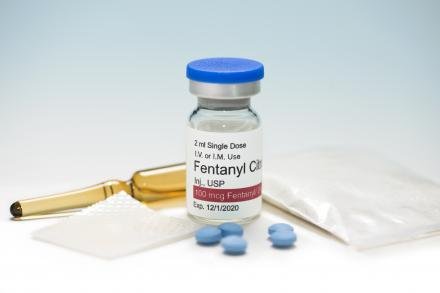Fentanyl
Price range: $110.00 through $220.00
Buy fentanyl online
Experience fast-acting, pharmaceutical-grade relief with our premium fentanyl. Psychedelic2 offers secure, discreet delivery across the USA, Canada, and Europe. Buy fentanyl online now for trusted quality and rapid shipping.
Description
Buy Fentanyl Online | Pharmaceutical-Grade Pain Relief with Fast Shipping
Looking to buy fentanyl online with confidence? Psychedelic2 offers pharmaceutical-grade fentanyl for medical use, available in secure packaging and shipped discreetly across Canada, the USA, and Europe.
All fentanyl products sold at Psychedelic2 meet stringent safety standards and come from verified compounding pharmacies. Every order is backed by professional guidance, lab-tested formulation, and full customer support.
What Is Fentanyl?
Fentanyl is a synthetic opioid used to treat moderate to severe pain, especially in patients who do not respond to weaker medications. It is 50 to 100 times stronger than morphine.
Medical fentanyl is typically used in:
- Cancer pain management
- Post-surgical recovery
- Palliative care
It works by binding to opioid receptors in the brain and spinal cord, blocking pain signals and producing sedation.
Why Buy Fentanyl Online from Psychedelic2?
Psychedelic2 is a trusted source for high-potency medications and compounds. Here’s what makes us different:
- Pharmacy-grade fentanyl, never counterfeit or street-made
- Fast shipping across Canada, USA, and Europe
- Discreet packaging with full customer confidentiality
- Medical support team available for guidance and safe use
- Multiple formulations available: transdermal patches, lozenges, injectable solution
We supply to both licensed clinics and individuals with verified prescriptions or pain management needs.
Forms of Fentanyl Available
Psychedelic2 offers fentanyl in various formats to suit different needs:
- Fentanyl Patches (12mcg/hr to 100mcg/hr)
- Oral Lozenges / Lollipops
- Injectable Fentanyl (vials, ampoules)
- Buccal Tablets
- Fentanyl Nasal Spray
Each product is shipped with exact dosage instructions and safety information.
Buy Fentanyl Online Without Prescription?
We only supply fentanyl under strict health guidelines. For safety reasons:
- First-time customers must complete a short screening form
- Orders are manually reviewed by our pharmacist network
- We do not sell fentanyl for recreational use
If you have a valid medical need, our team will help guide your order through a safe, secure process.
How Strong Is Fentanyl?
Medical fentanyl is highly potent. Here’s how it compares to other opioids:
| Drug | Relative Potency |
|---|---|
| Morphine | 1x |
| Oxycodone | 1.5x |
| Hydromorphone | 5x |
| Fentanyl | 50–100x |
Because of its strength, fentanyl should only be used under medical supervision. Never increase the dose without instruction.
How Long Does Fentanyl Last?
Duration varies by formulation:
- Patches: 48–72 hours
- Injectables: 30–60 minutes (used in surgery or emergencies)
- Lozenges/tablets: 2–4 hours
Fentanyl has a rapid onset and short half-life, which makes it effective for breakthrough pain.
Fentanyl Side Effects
Fentanyl use requires careful monitoring. Possible side effects include:
- Drowsiness or sedation
- Respiratory depression
- Constipation
- Confusion
- Nausea
- Low blood pressure
In high doses or when combined with other depressants, fentanyl can cause fatal overdose. Do not mix with alcohol or benzodiazepines.
Is Fentanyl Addictive?
Yes. Like all opioids, fentanyl has a high risk of dependence. Long-term use should be monitored by a healthcare professional.
We do not promote recreational or non-medical use. If you’re struggling with addiction, visit Drug Policy Alliance or SAMHSA for support.
Is Fentanyl Legal?
In most countries:
- Medical fentanyl is legal with a prescription
- Street fentanyl is illegal and dangerous
Psychedelic2 complies with all regional laws. We do not ship to jurisdictions where fentanyl is banned or restricted for medical use.
Check your country’s opioid laws before placing an order.
Storage and Safety
Store fentanyl in a:
- Cool, dry place
- Locked container
- Away from children or pets
Do not flush or trash unused fentanyl. Ask our team how to return unused medication safely.
Who Should Not Use Fentanyl?
Do not use fentanyl if you:
- Are opioid-naive
- Have severe asthma or breathing issues
- Are allergic to fentanyl or similar drugs
- Take MAOIs or sedatives without doctor approval
Always disclose your medications and medical history before use.
How to Buy Fentanyl Online Safely
- Visit Psychedelic2.com
- Select your preferred fentanyl product
- Complete a quick intake form
- Submit payment via secure checkout
- Receive discreet, trackable shipping within 2–5 days
All orders are protected by encryption and customer support follow-up.
Why Trust Psychedelic2?
We are committed to safe access, quality control, and ethical distribution. Our sourcing is 100% pharmacy-grade, not from black market labs or cartels.
What you get:
- Verified lab results on request
- Responsive customer service
- Real shipping updates
- Transparent refund policy
Frequently Asked Questions
Is fentanyl stronger than morphine?
Yes. It’s 50–100 times stronger and should be used with care.
Do I need a prescription?
Yes. A medical condition must be verified before shipping.
Do you ship to Canada and Europe?
Yes. We serve all regions where fentanyl is legal for medical use.
Can I return unused fentanyl?
Yes. We provide disposal instructions or arrange return shipping.
Additional information
| Quantity | 5 patches of 100mcg/hr, 2 grams, 100mcg tablets , 28, 50mcg/ml(25× 20 millimeters |
|---|


Reviews
There are no reviews yet.